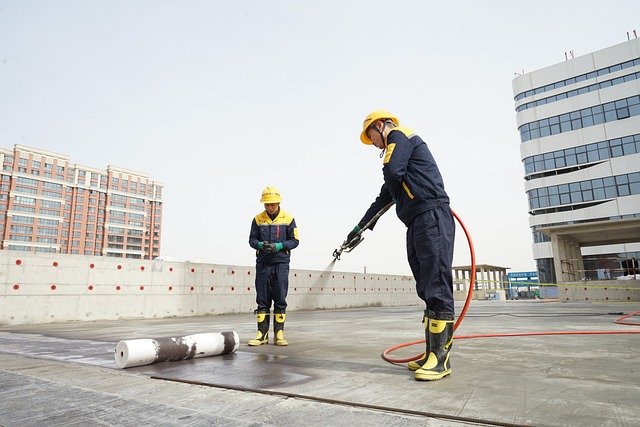Waterproofing the Basement: When, Where, and How It Must Be Done
A basement serves a variety of functions in a home. For some, it’s a space to store seasonal items or wash clothes, while for others, it becomes a recreation area or even a home office. Regardless of its use, no homeowner wants standing water in the basement. When moisture builds up in a basement, it can lead to mold, structural damage, and ruin valuable belongings. Waterproofing your basement is essential for preventing such issues, and recognizing the signs of water damage early on can save you from costly repairs later. This guide covers when and where basement waterproofing should be done, and how you can address common issues effectively.
Signs That Your Basement Needs Waterproofing
Before diving into the methods of waterproofing, it’s important to understand how to identify when your basement requires attention. Here are some key signs:
- Mold and Mildew: The most common indicator of excessive moisture in a basement is the growth of mold and mildew. Even without visible standing water, damp air can foster mold, leading to unpleasant smells and health risks. A dehumidifier can help control moisture levels and prevent mold growth.
- Exfoliating Paint: Peeling or bubbling paint on basement walls is another sign that moisture has infiltrated. When water seeps into the walls, it causes the paint to lift and peel. This is often the result of excessive dampness or a lack of proper waterproofing in the initial construction.
- Leaky Walls: If you notice damp patches or condensation on the walls, this could be an indication of leaks from cracks or pipes. Left unchecked, these leaks can lead to significant water damage, rotting wood, and weakened foundations.
- Dry Rot: Wood exposed to moisture for long periods can develop dry rot. This decay is a direct consequence of prolonged exposure to water and can severely weaken the structure of your home.
- Water Damage: Consistent water intrusion, either from flooding or leaks, can lead to significant damage over time. If you see standing water or notice your basement is prone to flooding, it’s critical to address the issue before it affects the foundation or plumbing.

External Factors That Contribute to Moisture
Waterproofing isn’t only about addressing internal issues. Environmental factors can also contribute to dampness in your basement. Homes built at the lowest part of a hill or in areas with a high water table are especially vulnerable to water accumulation around the foundation. Improper drainage, clogged gutters, or poor landscaping can direct water toward the basement, exacerbating moisture problems. If your home is in a flood-prone area, flood insurance may also be worth considering to protect against extreme weather events.
Waterproofing Methods for Your Basement
While some waterproofing methods are best handled by professionals, there are several DIY solutions you can implement to improve your basement’s resistance to moisture.
- Use a Dehumidifier: If your basement suffers from high humidity or condensation, a dehumidifier can be an easy and effective solution. This appliance removes moisture from the air, preventing the buildup of mold, rust, and mildew. Dehumidifiers come in various sizes and capacities, and many models can be connected to a drain for continuous water discharge.
- Waterproof Carpet: Basements are notorious for damaging carpets due to moisture. To protect your floors, consider replacing regular carpeting with waterproof materials or using waterproof carpet pads. These products help prevent moisture from seeping into the carpet and can reduce the risk of mold growth.
- Seal Cracks and Apply Waterproof Paint: Many basement leaks are caused by cracks in the foundation or walls. These can often be sealed with hydraulic cement and waterproof paint. To begin, clean the surface thoroughly to remove debris, and allow the area to dry completely before applying a sealant. Once sealed, your basement walls will be much more resistant to water infiltration.
- Protect Wooden Surfaces: Wood is highly susceptible to water damage, which can lead to dry rot and other issues. To prevent wood from coming into contact with moisture, ensure that pipes are properly sealed and that wood is not in direct contact with the floor or soil around the foundation.
- Inspect and Clean Gutters and Downspouts: Waterproofing your basement also means taking care of the drainage system around your home. Ensure that gutters and downspouts are free of debris and functioning properly. Water should be channeled away from the foundation to avoid pooling around the base of the home, which can increase the risk of flooding.
Professional Help: When to Call the Experts
While DIY methods can provide relief, there are times when professional help is necessary. If your basement experiences constant flooding or if you notice serious structural issues like foundation cracks or bowing walls, it’s time to call in experts. Professional contractors can use specialized equipment to detect hidden sources of water, repair foundation damage, and offer long-term solutions to keep your basement dry.
Additional Tips for Long-Term Basement Protection
- Install a Sump Pump: A sump pump is an essential tool in areas prone to flooding or with a high water table. The pump helps move excess water from the basement to outside, preventing standing water from damaging your home.
- Elevate Important Items: If flooding is a concern, store valuable items on shelves or elevated surfaces to protect them from potential water damage. Even small precautions like this can prevent irreplaceable possessions from being ruined in the event of a flood.
- Invest in Professional Waterproofing: For lasting results, consider professional basement waterproofing services. These experts can apply advanced solutions like exterior drainage systems, foundation repair, and sealant applications to ensure your basement remains dry and safe for years to come.



